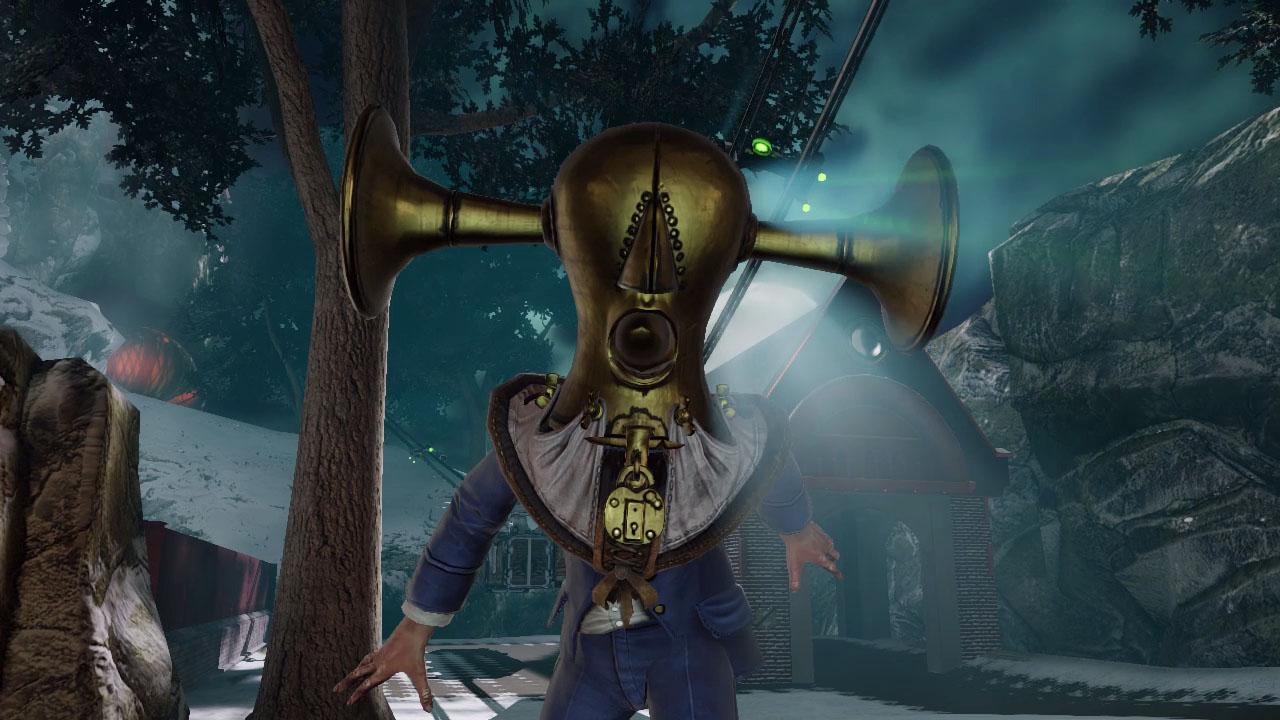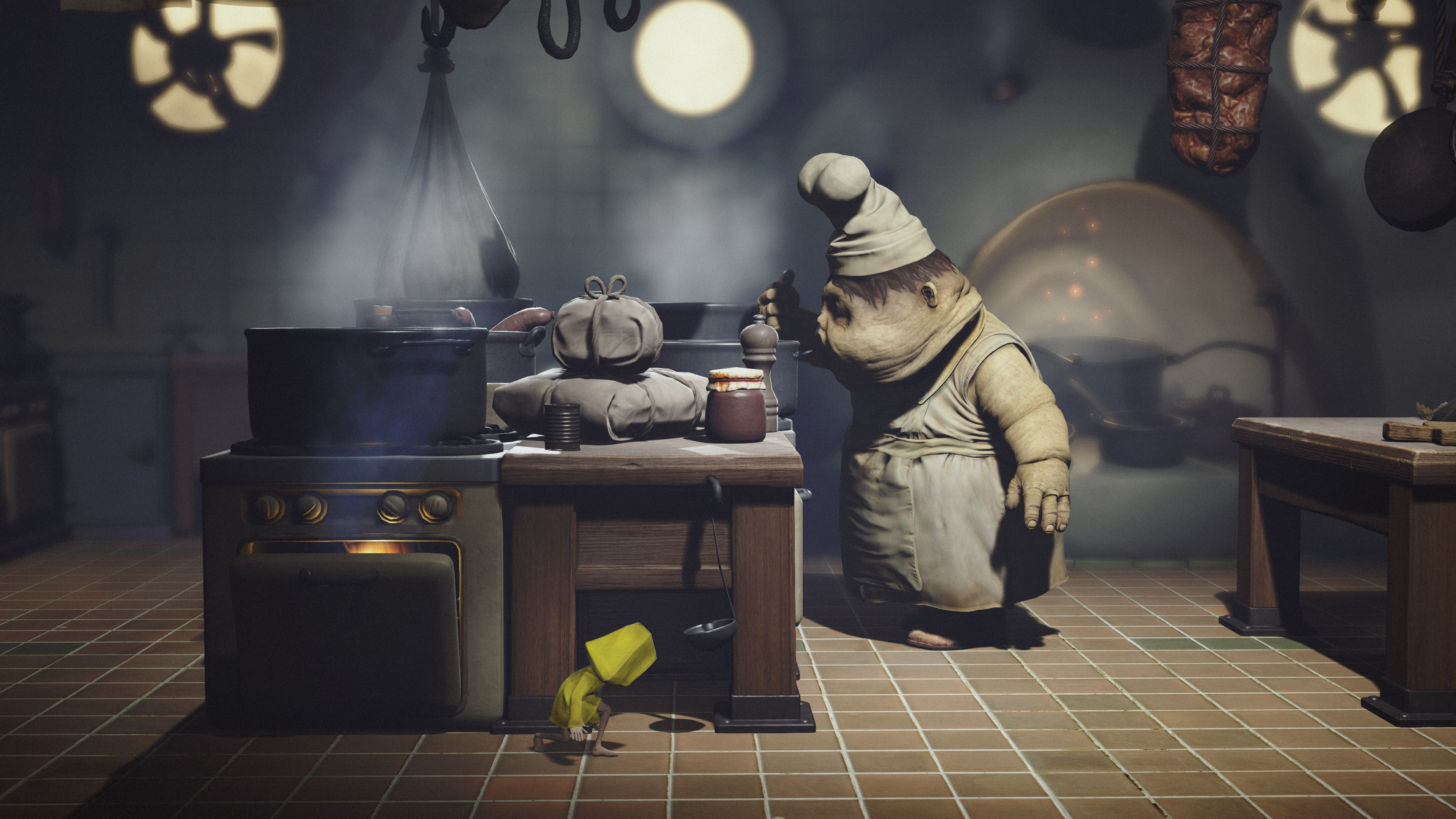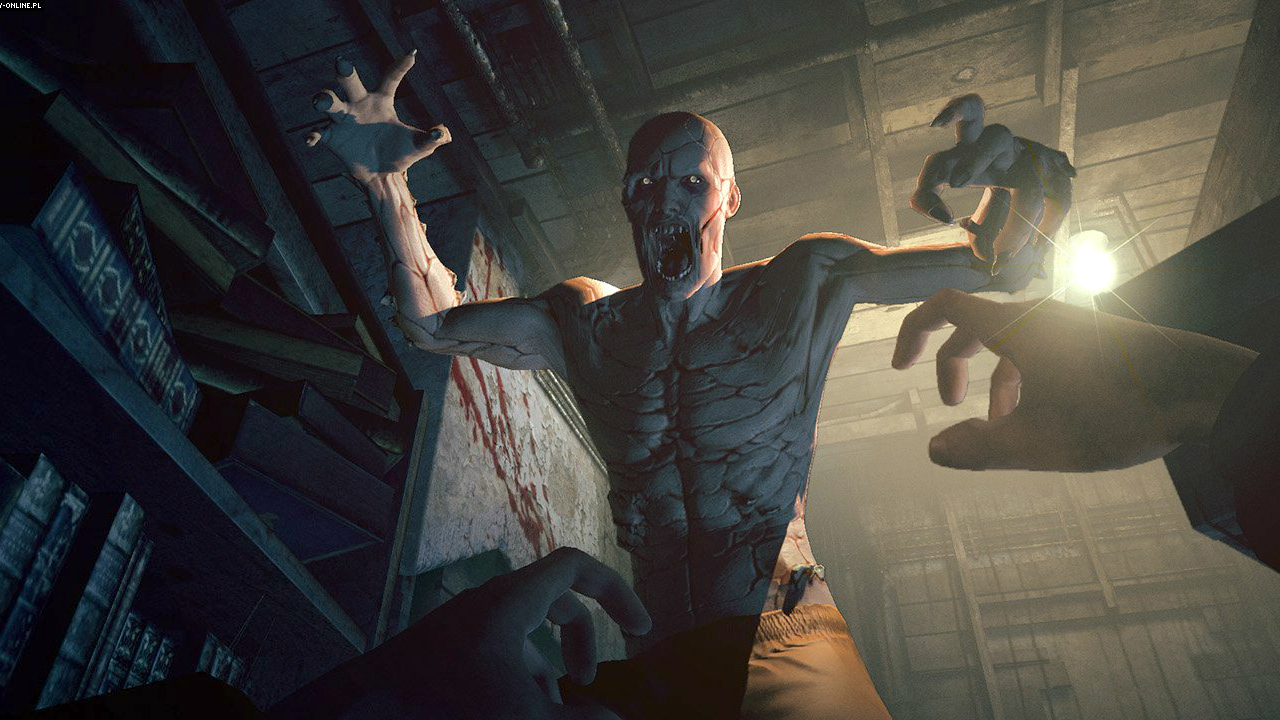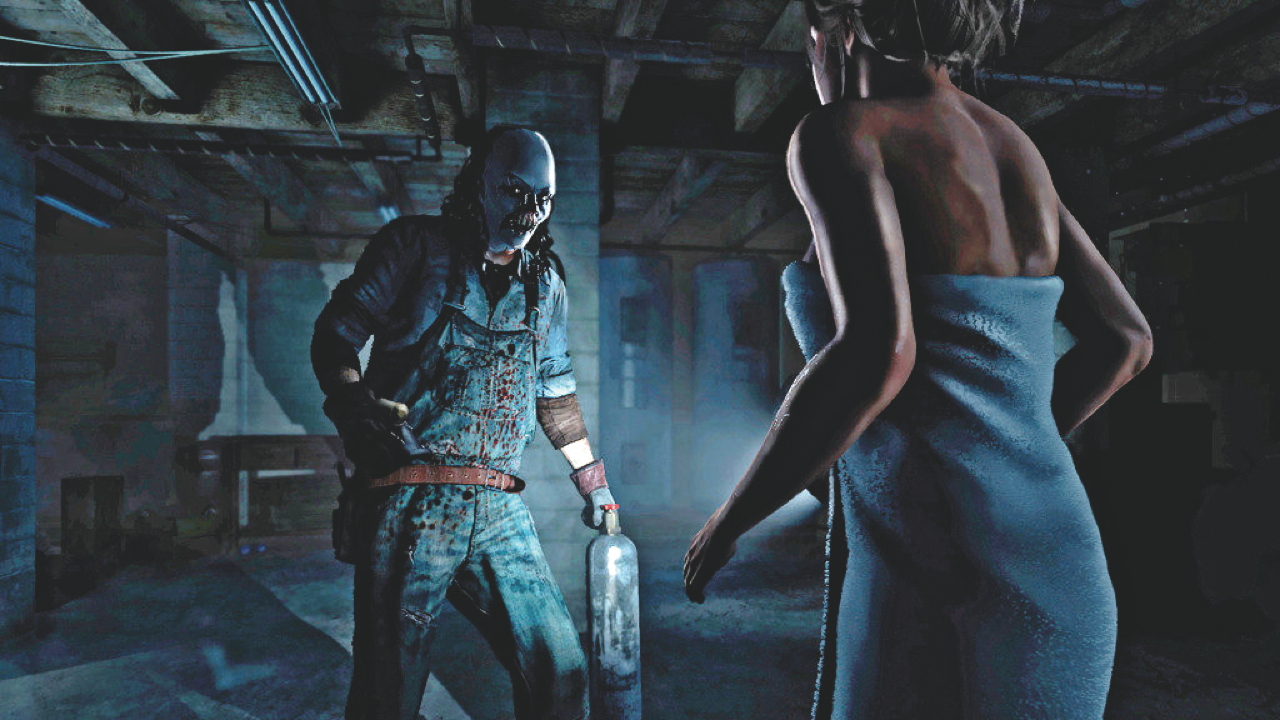This generation's horror games ushered in a new era of scaring the crap out of us
How horror rediscovered its mojo over the last generation of gaming


Ravenholm, Vault 108, and the devilish brilliance of horror sequences in non-horror video gamed
The child in the yellow raincoat snaps open an oversized lighter and jogs gently towards the right of the screen, her bare feet slapping against the wet ground. Nothing looks out of place, not really, and yet… there's something wrong here, isn't there?
Why was this small girl waking up from a nap taken within a giant suitcase, two fuzzy photographs carefully taped on the inside of the lid? Why is she wearing a perfectly weather-appropriate rain slicker, but her small feet are cold and bare? Why on earth is the lighter the same size as her fist; is this world too big for her, or is she simply too small?
Later, you'll realise that this poor, impossibly lonely child will witness far more distressing things than an impossibly big lighter. Later, you'll meet characters ripped from the collective conscience of the Brothers Grimm; huge, hulking beasts that boast the rough size and shape of human beings, some even sniffling and shuffling in vague approximations of humanity that don't quite convince up close.

The skin hangs off their faces, pallid and wan, like ill-fitting masks, and their bloodshot eyes are set too far back in their pasty faces. Excess flesh, grey and lifeless, hangs over their wrists. Nothing is right about these things – nothing is right about this place. There are no audio logs or handy collectible diary notes. There is no narration or internal monologue.
You bumble about this grim, miserable place without direction or motivation beyond just wanting to get the hell out of there, and it's that absence of traditional storytelling that makes everything so, so much more terrifying.
Even when the credits rolled, I still wasn't entirely sure what happened in Little Nightmares to the girl in the yellow raincoat. An unrelenting, dark fairy tale, this 2.5D platformer grips in a way I hadn't quite been anticipating, and has stuck with me ever since.
Despite its cartoony, exaggerated presentation, it epitomises a whole new generation of horror games, those that seek to unsettle with light-touch exposition and a surprising absence of traditional genre tropes. There are few jumpscares. No combat. Just you, her, and the cloying desperation to escape.
Weekly digests, tales from the communities you love, and more
Surviving survival horror

By the time it limped towards the end of the PS3 and Xbox One era, it felt like the horror game genre itself was half-dead. For a brief moment, the genre had lost its identity, the advent of action-horror – led front and centre by the wonderful Resident Evil 4, of course – setting the genre off into a whole new direction. Trouble was, it set off without the map or compass horror games so often insist we carry, leaving it lost and uncertain as we ushered in the age of the PS4 and Xbox One.
The genre that had once spawned huge blockbusters in the halcyon days – Resident Evil; Silent Hill; Fatal Frame/Project Zero; Clock Tower – faltered. We fell in love with those games; games that made us feel overwhelmed and under-prepared, games that showed without telling, finding clever ways to circumvent technical restrictions and still scare the crap out of us.
But where the PS4 and Xbox One had the capacity to ramp up effects and environmental storytelling, it felt like the stories were no longer worth telling. We were suddenly armed with flamethrowers. Ammo was inexplicably plentiful. Horror became less about survival and more about sustaining power fantasies.
Thank god, then, for Until Dawn. Stuffed with horror tropes and stereotypes, including an all-star cast straight out of Hollywood, Until Dawn took us back to basics, using clever camera angles and the omnipresent fear of permadeath to ramp up tension and dread. Its stunning, photo-realistic graphics were used to maximum advantage, allowing us to see tangible emotion - and agony - on the faces of the cast, as well as all that delicious body-horror gore.

Outlast picked up this ball and ran like hell with it, too. The closest thing to a contemporary Silent Hill game I'd seen to date (and maybe ever since), Red Barrels' "ooh mental health is spooky'' messaging may have lacked nuance and finesse, but it employed new tricks such as a night-vision video camera - and the desperate shortage of batteries for it - to keep things interesting. And by interesting, I mean terrifying. Like Until Dawn, Outlast was a horror game that didn't shy away from the conventions of the genre.
Perhaps most interestingly of all, while both these games are terrifying, there's no combat whatsoever. Whilst we closed out our Xbox 360 days with Resident Evil 5's Chris Redfield, who was able to mow down hordes of undead denizens with nowt more than a flex of his biceps, the next generation of horror games drew heavily on the helplessness of the everyman. Inspired by indies like Amnesia: The Dark Descent, gone were the groaning inventories and military-grade armouries. The industry shifted back to the tales of ordinary people stuck in extraordinary circumstances. It was a significant shift, and one developers have continued to embrace.
And let's not forget Five Nights at Freddy's. I know, I know, there's a snobbery around Five Nights - there's a snobbery about a lot of indie horror, actually - but Scott Cawthon's point-and-click survival horror went on to inspire a whole sub-genre of survive-the-night games all of its own, and the broken facades of Freddy Fazbear's Pizza animatronics continue to haunt the dreams of a whole generation of horror-hungry kids. While not all instalments have been as impactful as that first one, it's nevertheless a seminal game that holds a sustained and meaningful impact on the shape of video game horror.
P.S. P.T.

"There's now a whole other subclass of horror that thrives on subtle, psychological spooks with nary a jump scare to be seen"
Which leads us neatly, to P.T.. How strange it is that one of last gen's most terrifying games wasn't really a game at all, but a demo, and for all the back-and-fore about the effectiveness of its opaque mechanics, there's no denying the cultural impact it had.
Spawning an army of unashamed clones, it reinvigorated a dying genre with its devilish blend of jump scares, scripted and unscripted spooks, and a truly terrifying fourth wall breach. Exactly when, or if, we'll get to see Hideo Kojima's horror experiment fully realised remains to be seen, but I still maintain that the death of Silent Hills was nowhere near as harrowing as the demise of a Guillermo del Toro and Junji Ito collaboration.
And yet the game that sticks most firmly in my mind as we transition to a whole new generation is a game crafted and presented completely outside the shell of traditional horror. Painted with the pretty pastels oh-so typical of anime-style visual novels, Doki Doki Literature Club presents itself as nothing more than a teen dating sim, wherein you, a dreamy new arrival at a school who sends teen hearts a-fluttering, spend several hours courting the affections of four different, if all similarly cute, classmates.

Slowly, though – so slowly that you're not even sure if you're imagining things – Doki Doki Literature Club pulls back the covers to reveal a devilishly macabre tale of lust, loss, and jealousy. Those delicious pastel visuals slowly morph into something else. Yes, P.T. did an admirable job of breaking the fourth wall, but Doki Doki takes it to strange, terrifying new heights that have yet to be surpassed.
As for what's next? Who knows. Video game horror has taken many forms this generation, games that have redefined the genre, games I didn't even get to talk about, such as Alien Isolation, Resident Evil 7, Soma, Prey, and Inside (oh god, Inside!), to name but a few.
But perhaps the greatest thing about the horror games I've captured here? Just marvel at how different each one is from the next. For all the titles exploiting cutting-edge graphics and sound design to craft terrifying antagonists and perfectly-timed scares, there's a whole other subclass of horror that thrives on subtle, psychological spooks with nary a jump scare to be seen. Horror has evolved and matured this generation, and while I have no idea what horror will mean to us as we usher in the next, I will be here for it… even if "here" is cowering behind a cushion.
For more, check out the best horror games to scare yourself silly with, or check out our top five games of the generation in the video below.

Vikki Blake is GamesRadar+'s Weekend Reporter. Vikki works tirelessly to ensure that you have something to read on the days of the week beginning with 'S', and can also be found contributing to outlets including the BBC, Eurogamer, and GameIndustry.biz. Vikki also runs a weekly games column at NME, and can be frequently found talking about Destiny 2 and Silent Hill on Twitter.


